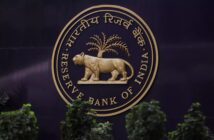Lending to the real sector of economy: slowing down development and segment analysis
The Accounts Chamber presented an analysis of implementation of the strategic plan for development of the Russian financial market. According to the obtained results, the banking system of the country practically does not provide crediting of the real sector of economy.
Specialists have analyzed the period from 2016 to 2019. During this time, financial institutions have provided loans to various organizations in the amount of $70.9 billion. This low dynamics has also affected the loan portfolio – in the corporate segment, it showed an annual growth of only 0.8% or 0.27%.
In real terms, the situation is even worse. If we take into account inflationary processes over 3 years, which amounted to about 12%, lending volumes have decreased by 11%.
In order to improve the condition of the segment, banks actively started to issue loans to individuals. Over the analyzed period, the debt burden of consumers increased by 4.2 trillion rubles. In nominal terms, it is 39.5%, while in real terms – 23.8%.

This trend allowed consumer lending to outrun business lending almost 6 times. This was possible due to an increase in the issuance of credit cards, mortgages, loans for the purchase of goods and unsecured debt. If we consider domestic credit in the context of the Russian economy, there is a decrease, which differs from the trend in the global market. For example, Russia’s GDP in 2015 was 57.8%, and by 2018 it had dropped to 53.9%. At the same time, the world GDP was 132.8%, and became 142.5%, which is more than 2.5 times more than what was observed in Russia. The upward trend was recorded not only in countries with developed economies, but also in emerging markets.
Such disappointing analysis results allow us to conclude that the largest segment of the country’s financial market has serious problems. Unfortunately, the real sector of economy is affected by negative factors, which hinder its development and the industry as a whole.
The strategy for modernization of the banking system, which was outlined in 2016, implied the implementation of 7 goals. In the given period the Central Bank managed to achieve only two of them – the other five can be considered unfulfilled.
The programme aimed to increase the sector’s assets to GDP to 120-125%. As a result, they fell from 92.6% to 91%. The bank’s capital was to grow from 10% of GDP to 11.5% of GDP, while at the moment there is a decline to 9.8%.
The number of loans should have been brought closer to the level of 70% of GDP, as a result – only 51%.
Pension savings were also lower than planned, as was the amount of pension reserves.
The target was achieved in the ratio of insurance companies’ assets to GDP. The satisfactory result is observed in the segment of insurance premiums to GDP.




